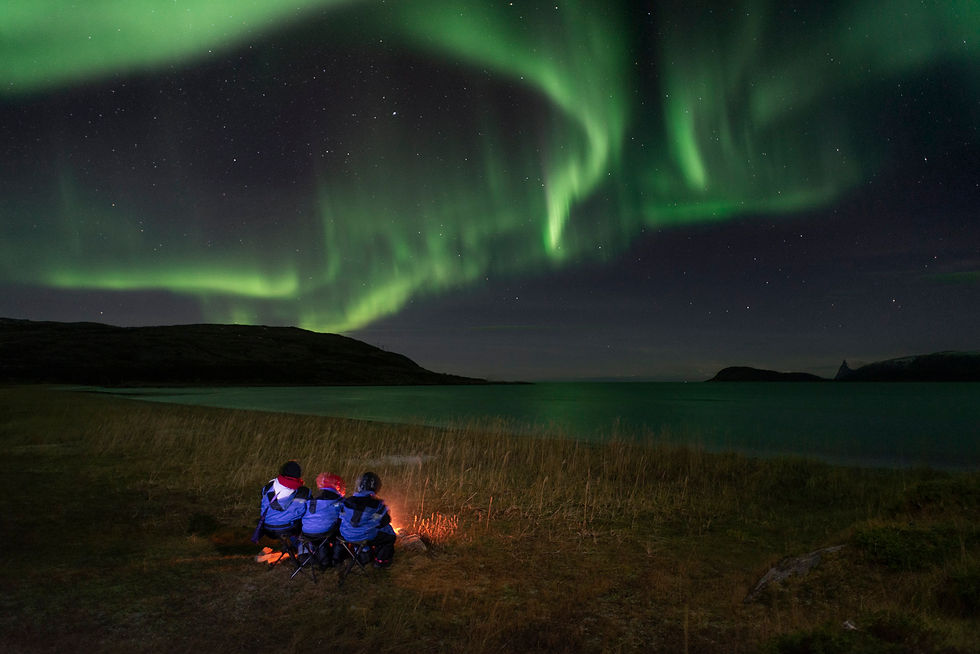I visited Tromsø, removed campfires and restored nature.
- Megan Starr

- Aug 19
- 3 min read
During my recent trip to Tromsø to volunteer with Rissa Citizen Science, I headed out to Kavløya to help remove campfires (and restore the ground surrounding them). Our group also assessed where removing campfire sites would be most beneficial and tested methods to restore vegetation damaged by fire.

Young travelers removing a campfire with Rissa Citizen Science and NINA in August 2025.
I learned that campfires around Tromsø are started and used by many different groups of people, but those most notorious for leaving behind campfire remnants are northern lights hunters. Over 200 registered companies offering aurora tours operated in Tromsø last winter season (2024-2025), and this doesn't even include Airbnb, foreign operators and unregistered companies.

Green northern lights and a campfire: the most sought-after product for travelers in Tromsø.
As a person who takes and recommends northern lights tours to readers of my blog, this hit close to home. I already have many qualms with how northern lights tourism is conducted (I live in Rovaniemi, Finland), and seeing these 'traces left behind' certainly was a rude awakening to a type of tourism that really shouldn't leave footprints.

Campfires remain visible for many years in the Arctic where vegetation grows slowly.
Removing a campfire is a process. Not only does it involve removing what was left behind, but it also involves replacing the pit and burned soil with a small block of similar soil/vegetation from nearby. This expedites regrowth.

A volunteer using turf to speed up regrowth in a campfire made by aurora hunters in Tromsø.
Campfires come at a cost to the beautiful Norwegian nature. But, there are a few things that northern lights companies (and private individuals) can do to reduce their footprint if they want to make a fire:
The first is to ensure that the wood is chopped in thin strips, no larger than the size of a wrist. This will help the combustion, create more flames than amber, and will only leave fine ashes nehind.
Another thing that tour companies can do is to use firebowls. I have a couple of these myself, and always have one in the trunk of my car when I hit the road. The one I use is foldable and fairly lightweight, perfect for people on the move.

A whole tree used to fuel a campfire at a northern lights watching spot in Tromsø.
I have, fortunately, been on a northern lights tour in Tromsø in the last year that DID use a firebowl on our tour and while I didn't think much about it at the time, I am grateful that was the case and that I have only positive remarks to say about the company, even more so after learning what I know now. I hope to see northern lights tourism in Tromsø evolve into a more traceless product in the years to come, as it has the potential to be so.
In the meantime, I think it is wonderful that Rissa Citizen Science and NINA are helping remove these campfires with travelers from the areas around Tromsø, and I was excited to be a part of restoring nature in a country that I have previously called home, and one that has brought me some of my fondest memories.

A volunteer removes ashes from a campfire made by northern lights hunters near Tromsø.




Comments